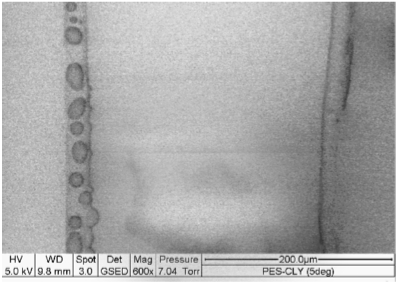Moisture Absorbing vs Moisture Wicking. What's the difference?
What's the difference between moisture absorbing and a moisture-wicking fabric? And how do you choose the right material for your activity?
Recently we were asked by a friend why we've chosen bamboo viscose – a moisture absorbing fabric – for our men's undershirts, rather than a moisture-wicking material. They assumed that a wicking fabric would move sweat away from the body quickly and hence be a better choice. We assured them that this was the case – so long as they didn't mind the inevitable sweat marks!
In this article, we explain the difference between absorbing and wicking fabrics, and how you can make the right choice for your activity so that you can avoid those perpetual sweat patches.
Moisture Absorbing Fabrics
Moisture absorbing materials have fibres designed to absorb and capture sweat.
The most common absorbent fibre used is cotton, but other fabrics have recently been designed that are more absorbent, such as modal, micro-modal, Tencel®, and other viscose-based fibres. All of these are made from the same base material – plant cellulose – which loves water.
Water (or your sweat) gets absorbed into tiny gaps called micropores inside the fibre:

PICTURE CREDIT LENZING AG
Pictures of cellulose-based fibres under a scanning electron microscope. The dark areas show water absorbed into the structure of the fibre.
A viscose or cotton undershirt worn under a shirt will, therefore, absorb and trap sweat before it reaches the shirt (or outer layer). Sweat is held by the undershirt inside the fabric's micropores: you won't feel wet on your skin, and your shirt won't show any sweat marks.
Moisture absorbing fabrics are especially beneficial for anyone who wants to avoid developing sweat marks or deodorant stains on outer layers. The sweat is trapped by the undershirt, and your expensive shirts and favourite tees stay looking clean and dry.
Moisture Wicking Fabrics
Moisture-wicking fabrics include synthetic fibres such as polyester or nylon, and any material that has been treated with a solution to prevent water absorption.
Polyester and nylon are water-resistant because they are made from materials with a chemistry that is similar to plastic. Instead of water being absorbed by the fibre it sits on, droplets stay on the surface and move around the fabric by running along the weave. Eventually, the water droplets reach the outside of the fabric where, if exposed to the air, they evaporate.

Picture credit Lenzing ag
Picture of Polyester fibre (left) and Tencel viscose fibre (right) under a scanning electron microscope in a moisture-rich atmosphere. Water droplets are visible on the surface of the Polyester fibre because it is a water-resistant fibre best suited for wicking. On the Tencel viscose fibre, the water has been absorbed into the fibre itself.
Because the wicking material does not absorb moisture, the fabric will dry faster in heavy sweating conditions. This might make it a perfect single layer for sporting activities: the sweat can evaporate directly into the air to prevent your clothes from becoming drenched. However, this would be a disaster when being worn underneath an outer layer. The wicking layer would quickly deposit sweat straight onto your shirt, creating visible sweat marks that you (probably) don't want.
Conclusion
Moisture-wicking materials will cool the body a little faster than moisture-absorbing materials and are best worn in situations where sweat needs to leave the body quickly. For example, I wear a moisture wicking fabric for my sweaty yoga class.
However, when it comes to undershirts, it has to be a moisture absorbing viscose fabric to minimise sweat-through and help you stay dry. Now you can let the undershirt take care of sweat so that you can take care of business.
***

© 2020 Robert Owen Undershirts
